Steph W. from SEOPressor


...help you check your website and tell you exactly how to rank higher?


92
score %
SEO Score

Found us from search engine?
We rank high, you can too.
SEOPressor helps you to optimize your on-page SEO for higher & improved search ranking.
By vivian on August 2, 2017

One of the most difficult things for those who work in SEO is explaining the SEO monthly report to your clients just what it is that you are doing for them. SEO professionals are kind of like the bass player in a rock and roll group. You know they’re there, you know things sound right, but you’re never really sure if they are hitting the right notes or if they are just standing around collecting dew in the breeze.
Of course, SEO done the right way is something that is very noticeable but it may not be something which jumps out at you straight away. For this, we have the SEO analysis report. SEO analysis reports are needed to justify their investment in your services.
These reports not only provide them with key performance indicators (KPI) but also make it easy for them to get useful information. If you’ve always just relied on your charm and good looks to keep clients, that’s great but you should be giving your clients more. Let’s look at what matters in an SEO report.
Your clients are busy. If they weren’t, they would be the ones hanging around, waxing poetic about their own business online. As such they need quick, easy access to important data that will show them the success of your efforts.
By using a dashboard in your SEO analyst report, you are effectively showing them the ‘executive summary’ of your reporting. Your clean client dashboard offers an overall of how your SEO efforts are generating a positive Return On Investment (ROI) for your clients.
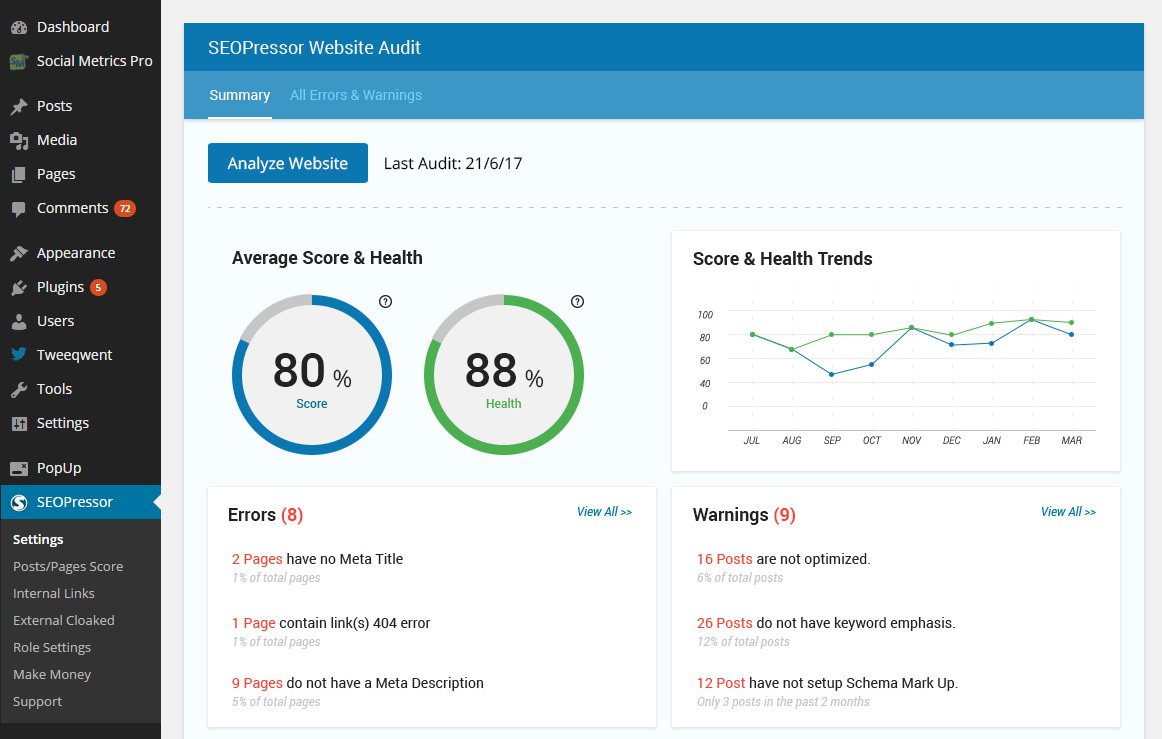
We usually analyze our SEO performance on SEOPressor Site Audit dashboard where you can see everything at one glance.
Your dashboard should have all the relevant information as it pertains to your efforts and should show them why they need to continue using you to grow and nurture their business.

Let’s not forget about our favorite tool when it comes to producing professional SEO reports- Google Analytics to monitor our monthly traffic growth.
Another thing that business owners want to see is a month over month growth. This goes back to the bass player analogy. Very few bass players are dynamic and strutting off with impressive solos, so why even keep the bass player at all?
As any musician will tell you, even though you may not hear the bass players low notes, you definitely realize it when they are gone. So it goes for SEO analysis. People are impatient by nature and a good SEO monthly report goes a long way.
Your clients’ reason that they are paying you a paycheck every month and they want to see how your efforts are giving them some immediate return. A good, concise, monthly SEO analysis report will show them that there’s constant growth throughout the year.
Just like the month to month tally, clients want to see that your services haven’t maxed out their functional use. As such, your clients should be seeing an increase in traffic over time as a result of your work.

Maybe it’s an advertising campaign you championed earlier in the year which is finally bearing fruit at the year’s end. It could also probably be your aggressive push of an annual event which is finally drawing eyes to their online presence.
Whatever it is, you need to be the one to show off and showcase this growth. This metric is so important because of no matter the size and scope of your client’s business, many businesses set budgets on an annual basis.
Search Engine Rankings are the bread and butter of SEO analysis so this metric should show off well. The large part of your SEO service is to get your clients to the top of the Search Engine Results Pages (SERPs) so that their links are more likely to be clicked.
As their SEO guru, you need to provide them an SEO report that shows how you’ve fared over time. If you’re tasked with ranking “XYZ Company” in January, you’re going to show your client how you’ve improved since February.
This may be one of those things where clients give you push back and think that they know more about why their business has seen growth than you do. But if you can show them through your specific SEO reports what it is that you have done to increase their page ranking then this should suffice in satisfying their concerns.
Rank Tracking by BiQ is a great product to keep track of your keywords rank without having to check for it manually.
It’s actually really easy to use. You just need to enter your domain and all the keywords that you want track. It will start to track the keywords and you will get to see the keywords performance over time.
![]()
If you are not sure which keywords to track, you can start with discovering your ranking keywords using BiQ’s Rank Intelligence.
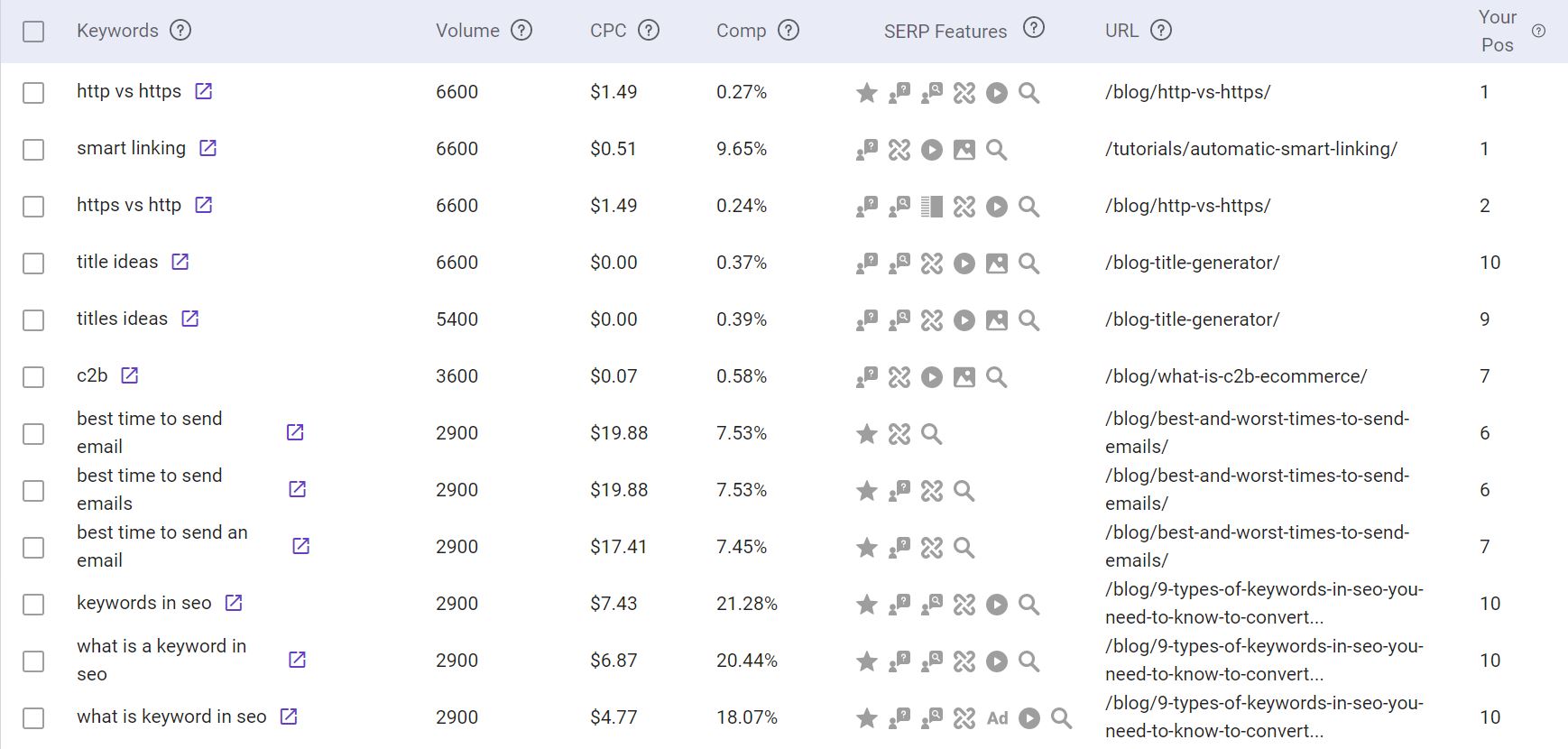
Rank Intelligence will reveal all the SEO reporting metrics such as keywords and pages you are currently ranking for. Then, click the keywords you want to track, and add them to the Rank Tracking.
One more thing to highlight in your perfect SEO report is the type, volume, and caliber of your keywords. You want to be able to show your clients that you are using keywords that they would use about their business. If you haven’t already, have a close look at the related keywords that your clients can rank for.
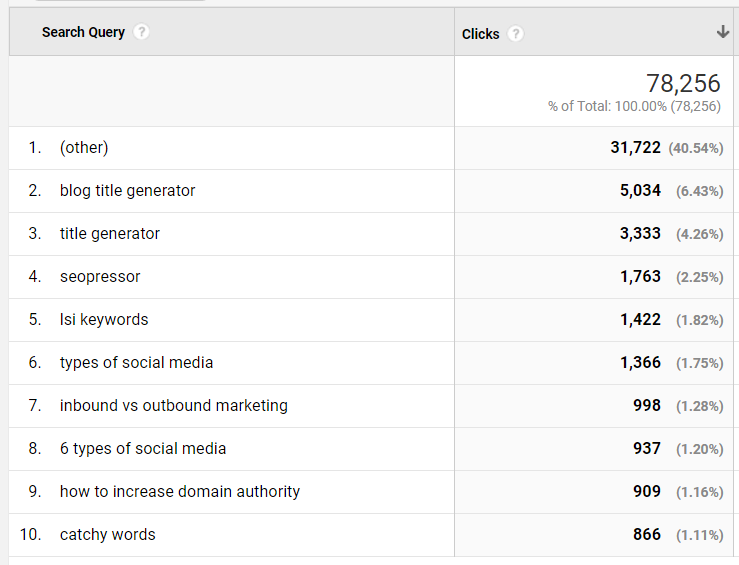
Other than tracking your website traffic, Google Analytics also help to track what queries that your readers are looking for so that you can aim for the keywords.
You may paste those keywords into the BiQ’s Keyword Inteligence to see if there is any other related keyword opportunities.
For example, here is the related keywords that I found for types of social media:
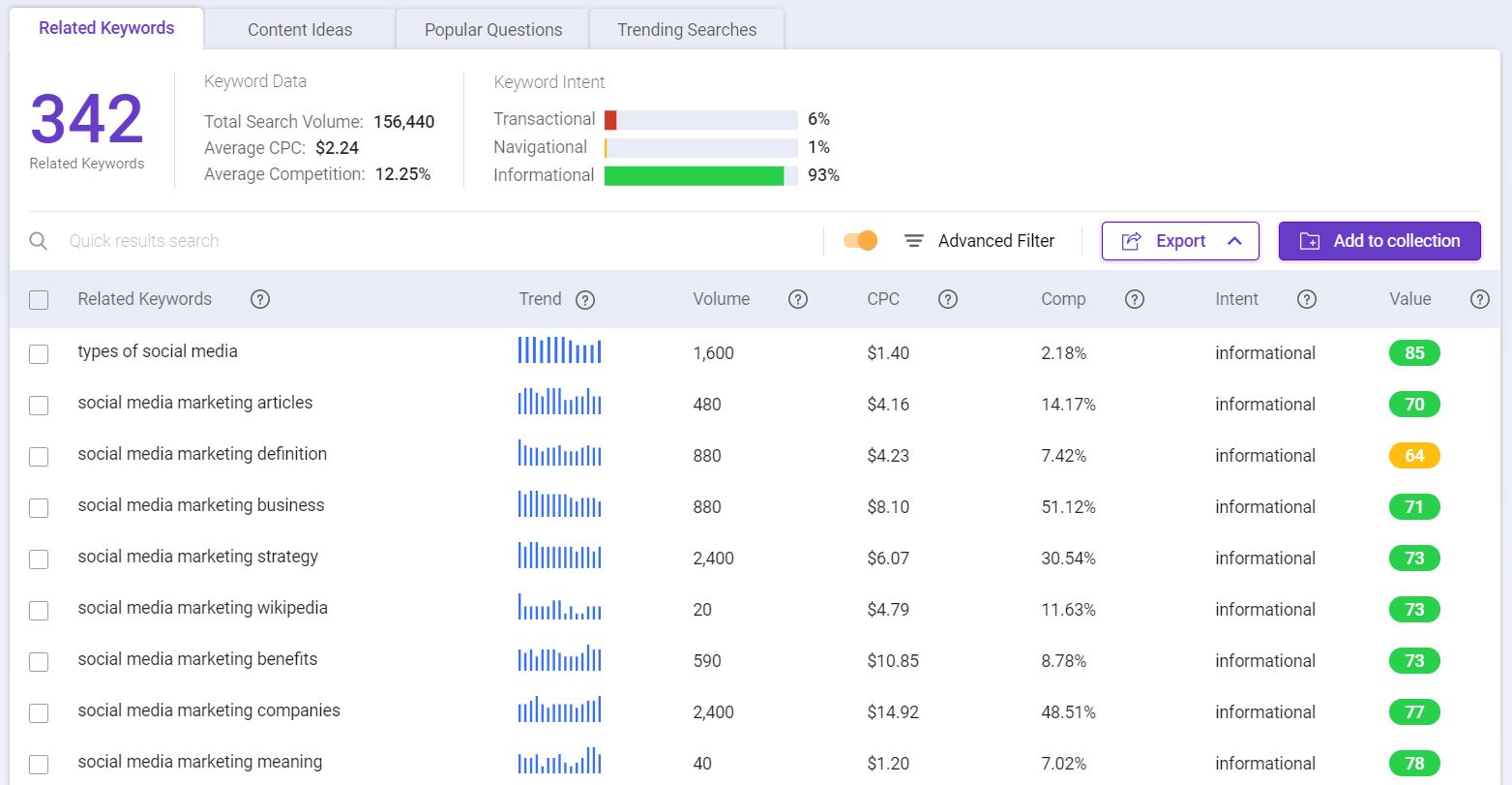
You will be able to see all the related keywords for types of social media together with important keyword data such as volume, competition, search intent, and relevance.
These insights can help you better in choosing and deciding which keywords to optimize for your client. If you can show them these facts and show them their increased performance among the selected keywords which are going to impact their bottom line, you are going to have a far easier time keeping their work.
A smart move is offering them a free SEO report that shows how many related keywords that you’ve ranked for your client during your SEO. This will not only show them that you’re making an impact online but will display for them your value to their business.
Google remains the predominant search engine on the Internet. They have many SEO reporting tools which in-house services can use to show cause and effect. One easy to understand SEO checker tool for your clients may be a goal report through Google Analytics.
This will help you not only set up goals but also track their progress. By getting your clients to look to something they are familiar with like Google, this will further solidify your place in their mid-range marketing efforts.
Even if they don’t really understand the role you’re playing at the time, most people know and trust Google. So if the Analytics report says there has been an uptick in activity since you joined their team, you can point to that as a positive!
Another good way to show your impact on your clients’ business is through the use of earned links. If the content you display for their business in-turn gets links from top websites in their industry or related industries, that’s a smart way to show off your SEO skills.
Highlight this fact in your reports so that they can see you getting the job done. It may take some time to look for the top websites in their niche but once you have gotten links from there, it’s off to the races!
This is the next well from which SEO will continue to grow. If you’re doing SEO right, you will also focus your online efforts on social media to give your clients wider exposure online. This is another one of those things which are going to take time and effort to build; we can’t all be Justin Bieber. Begin this at the beginning by setting up social media avenues.
If they’re already on the major social media platforms, then you can showcase how much their collective following has increased on these distinct platforms. Once you have built up an engaged and loyal following, then you can begin the engagement.
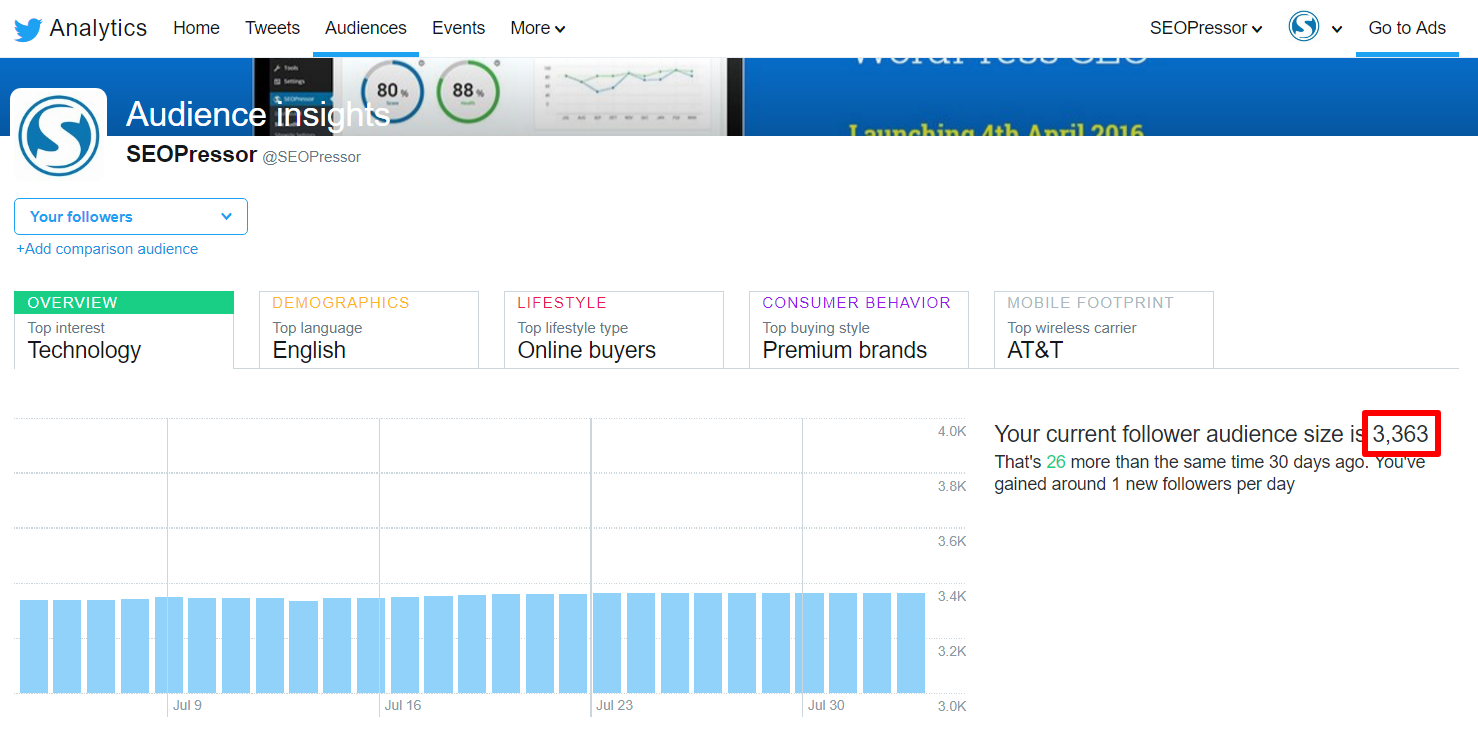
You can even track your Twitter growth through the Analytics.
With great followings, comes a great number of engagements. Highlight the number of retweets, comments, favorites, and likes that they’re receiving as a result of the digital marketing efforts. Social media is also a great avenue for building new client basis based on specific niche audiences you can reach to directly.
How many indexed pages exist from your client’s website? How many have these increased by since you have commandeered their SEO efforts? Another great tool to use is Google Webmasters; this tool will help you maximize your online impact.
Webmasters offer a “Google Index” section that will show you the number of pages indexed for a specific site. As your impact is felt on your client’s web page, this number should grow over time.
You can and should present a report to your clients demonstrating this type of invaluable growth, which will lay the seeds for their business for years to come.
Another thing to be mindful of when you’re doing your SEO analysis is the mobile traffic growth. This is something of a red herring because as mobile use has ballooned in recent years, so too has mobile traffic.
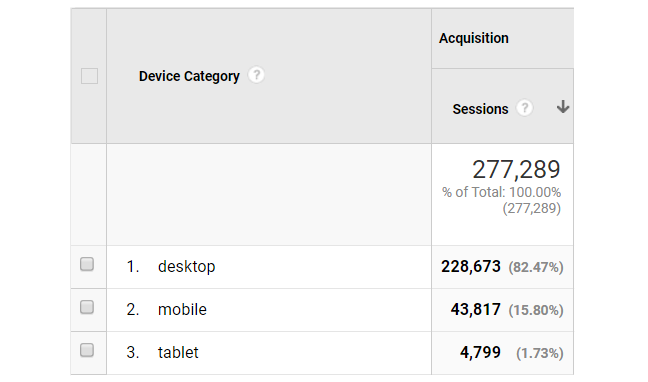
You can also check where are your users coming from on Google Analytics.
Still, your SEO efforts should show off what you have and continue to help your clients. Show off how your services are reaching people who are using smartphones and tablets. This may seem minor, but by highlighting this fact, you’re displaying their competitive advantage over their peers who aren’t paying attention to the mobile space.
Mobile is here and here to stay. Smart companies are jumping on board, even the smarter ones are already there.
Other SEO metrics that you should make your clients aware of is conversion rates – where do curious individuals become paying customers?
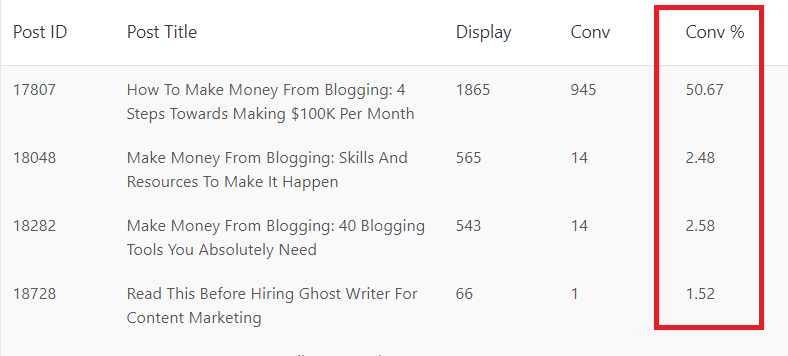
In SEOPressor, we use our in-house plugin to track the conversions of each blog offer.
For which campaigns and on which devices? If your clients are converting at a much lower rate on mobile devices versus desktops and laptops, then there’s likely a good reason for it. When your customers see the growth that your campaigns can bring to their bottom line, they will be a lot more receptive to this new way of doing business.
One more thing you in your SEO reports that can show off to your customers is the number of optimized pages. This is a little wonky, but by highlighting to your client the work you have done on the optimized pages, they will see that your work is a lot more intensive than some cynics may think is required.
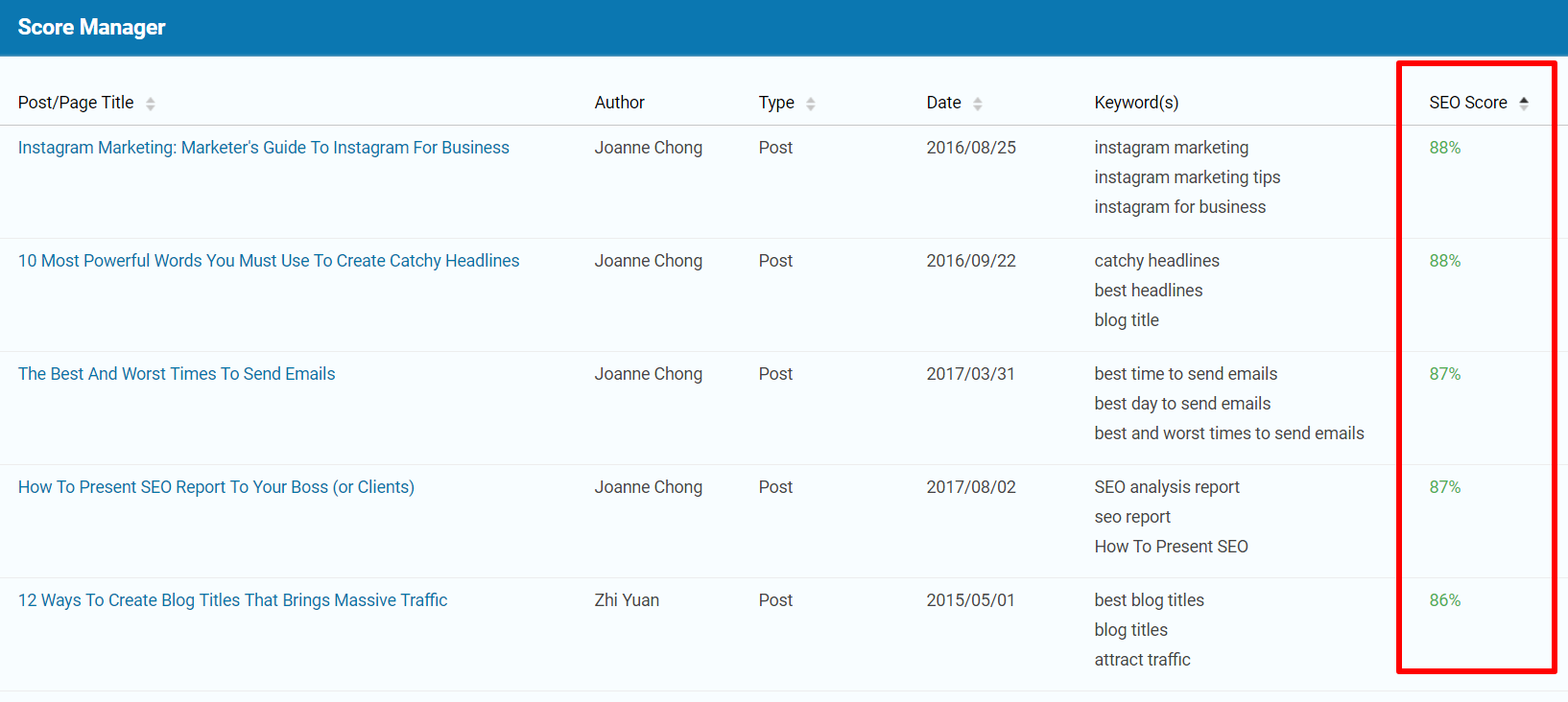
To make things easier, SEOPressor has a Score Manager feature where you can see all your optimized pages in just one page.
A perfect SEO report should show how many pages you’ve optimized versus the number of pages that are still untouched.
This type of report is a little more straightforward, but your clients want to know that you are spending not just effort and your SEO skills on their business, but also time. Time is money. How much time have you spent versus how much money they have spent? What did you do? Did you add articles and optimize keywords?
If you’ve created specific SEO reports that show exactly what you’ve done, you can justify the amount you are paid. This is also a good way to reinforce a lot of the good work you have already done by using clickable links wherever possible (if you’ve secured mentions) you are doubling down on the workload you have completed.
One more thing you can let your customers know about in your SEO analysis is the traffic by location. In other words, where are their visitors coming from?
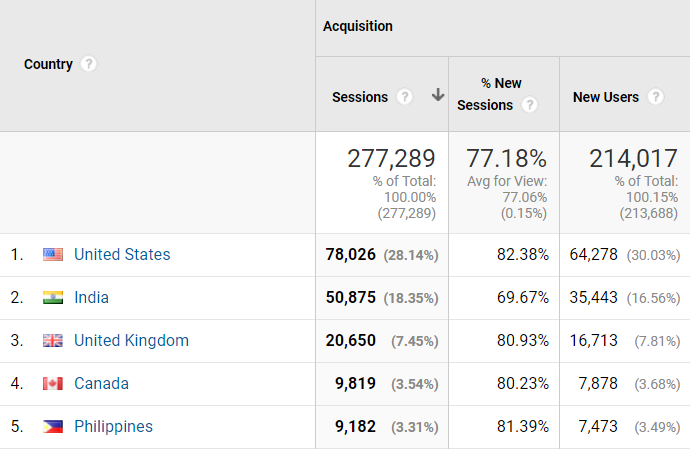
Again, Google Analytics helps to collect data of your visitors so you get to know who they are.
When you give your client a report that shows the top locations of inbound traffic, you can be helping yourself in a variety of ways. If the traffic comes from your campaigns, articles, or links, that’s great news for you! If however, the traffic is coming in by and large from the search, that’s alright. It simply shows that your search efforts are also bearing fruit. This is the kind of information that can be valuable for market segmentation down the road.
You don’t need to be an info-wonk to appreciate that specific SEO reports are critical for justifying anything. If you’re trying to get your customers to see your worth, detailed reports are invaluable! Your customers should be prepared with the budget to continue your service and strengthen their local search campaigns.
Don’t misunderstand, it can be nerve-wracking stepping into the shark tank at the end of each month and proving to your boss that they should renew your budget. Your clients may also look at the same information and decide they don’t want to continue to work with you and that’s okay!
It’s all part of the learning experience. When one produces a great SEO report, they will foster long-term success and relationships among all parties involved and improve your overall digital marketing strategy.
Do you have any strategies that you usually use to measure SEO success? Share it with us in the comment section down below so that we know how your organization presents the SEO report. Happy SEO reporting!
[This blog post was originally written and published by Joanne on July 31, 2017. It is most recently updated by Winnie on March 2, 2021.]
Updated: 4 January 2026


Save thousands of dollars (it’s 100x cheaper)

Zero risk of Google penalty (it’s Google-approved)

Boost your rankings (proven by case studies)
Rank High With This Link Strategy
Precise, Simplified, Fast Internal Linking.
